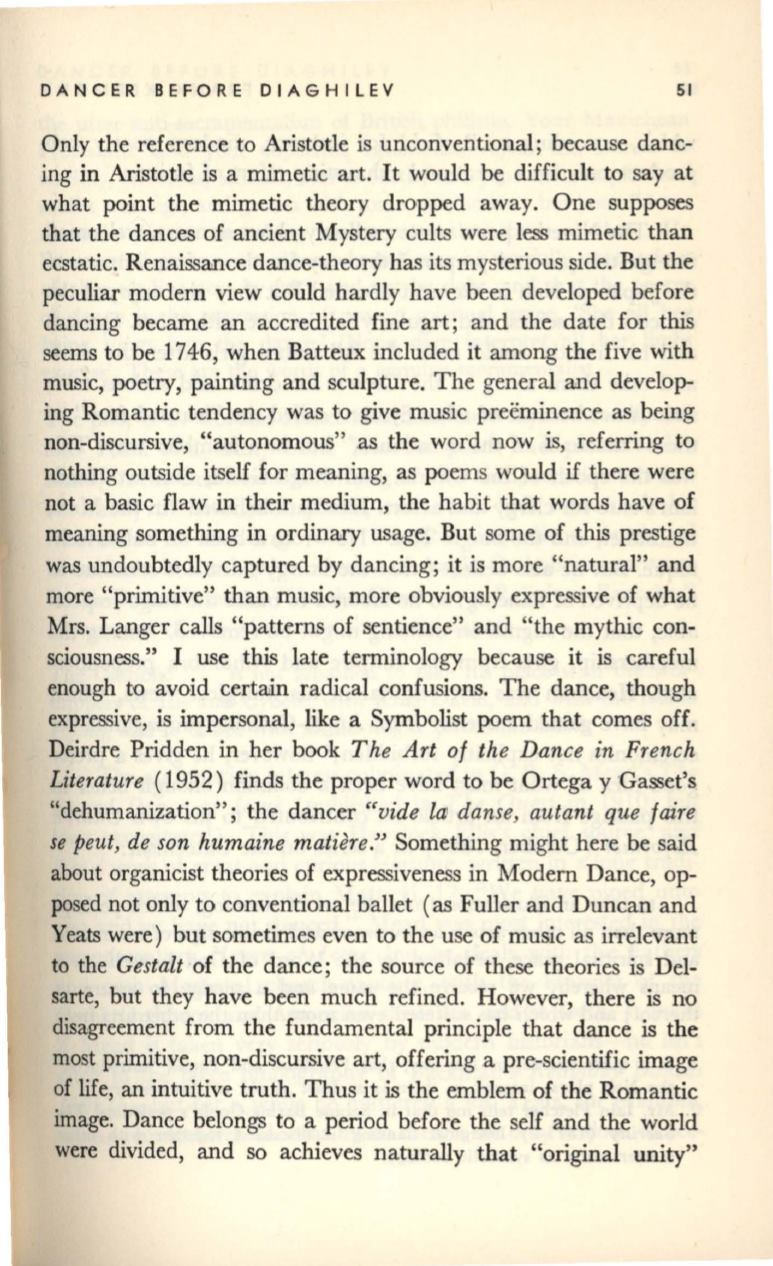
DANCER BEFORE DIAGHILEV
51
Only the reference to Aristotle is unconventional; because danc–
ing in Aristotle is a mimetic art. It would
be
difficult to say at
what point the mimetic theory dropped away. One supposes
that the dances of ancient Mystery cults were less mimetic than
ecstatic. Renaissance dance-theory has its mysterious side. But the
peculiar modern view could hardly have been developed before
dancing became an accredited fine art; and the date for this
seems to be 1746, when Batteux included it among the five with
music, poetry, painting and sculpture. The general and develop–
ing Romantic tendency was to give music preeminence as being
non-discursive, "autonomous"
.as
the word now is, referring to
nothing outside itself for meaning, as poems would
if
there were
not a basic flaw in their medium, the habit that words have of
meaning something in ordinary usage. But some of this prestige
was undoubtedly captured by dancing; it is more "natural" and
more "primitive" than music, more obviously expressive of what
Mrs. Langer calls "patterns of sentience" and "the mythic con–
sciousness." I use this late terminology because it is careful
enough to avoid certain radical confusions. The dance, though
expressive, is impersonal, like a Symbolist poem that comes off.
Deirdre Pridden in her book
The Art of the Dance in French
Literature
(1952) finds the proper word to be Ortega y Gasset's
"dehumanization"; the dancer
((vide 14 danse
J
autant que faire
se peut
J
de son humaine matiere.J}
Something might here be said
about organicist theories of expressiveness in Modern Dance, op–
posed not only to conventional ballet (as Fuller and Duncan and
Yeats were) but sometimes even to the use of music as irrelevant
to the
Gestalt
of the dance; the source of these theories is Del–
sarte, but they have been much refined. However, there is no
disagreement from the fundamental principle that dance is the
most primitive, non-discursive art, offering a pre-scientific image
of life, an intuitive truth. Thus it is the emblem of the Romantic
image. Dance belongs to a period before the self and the world
were divided, and so achieves naturally that "original unity"


